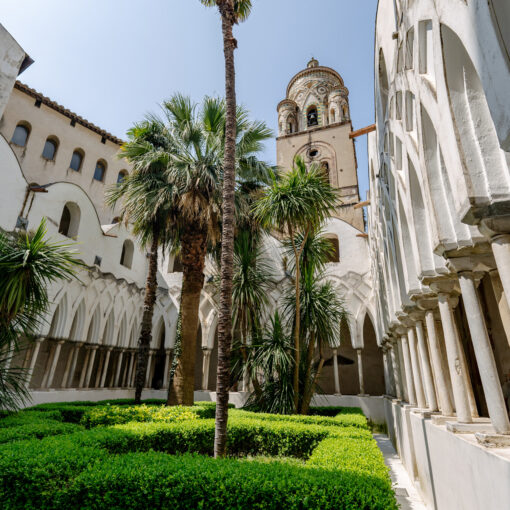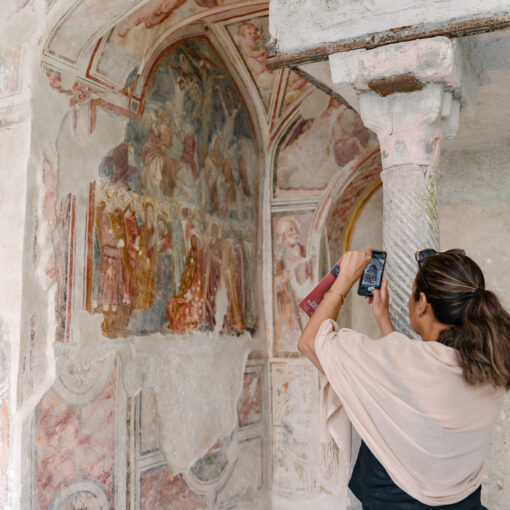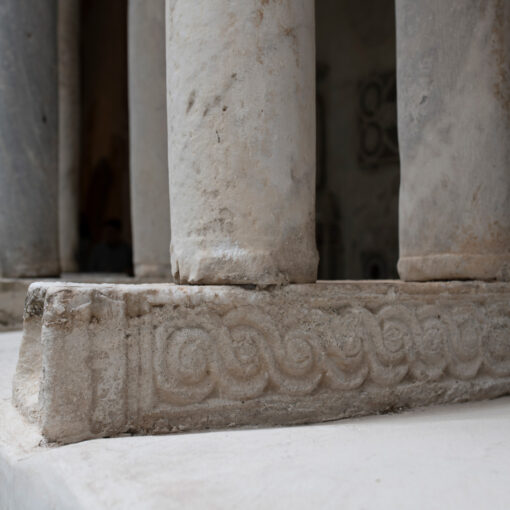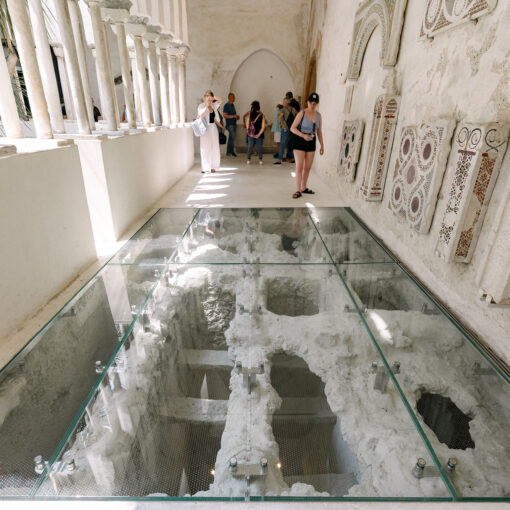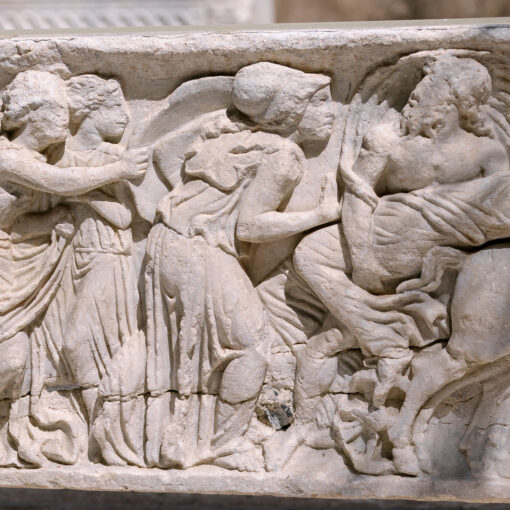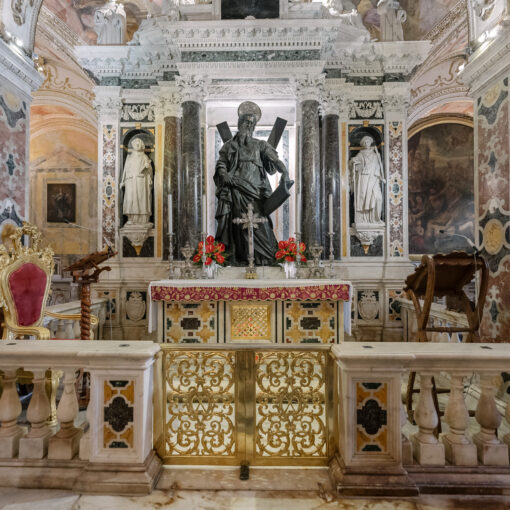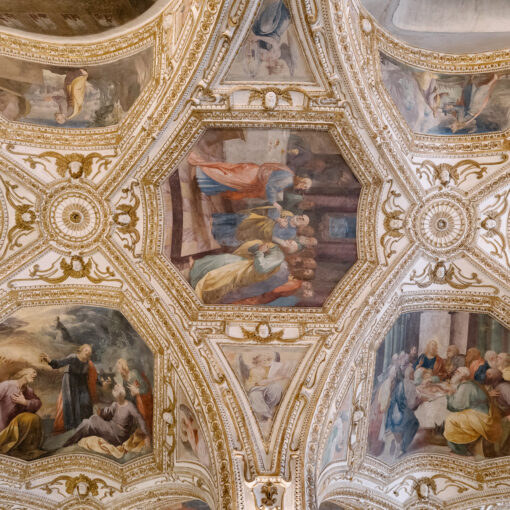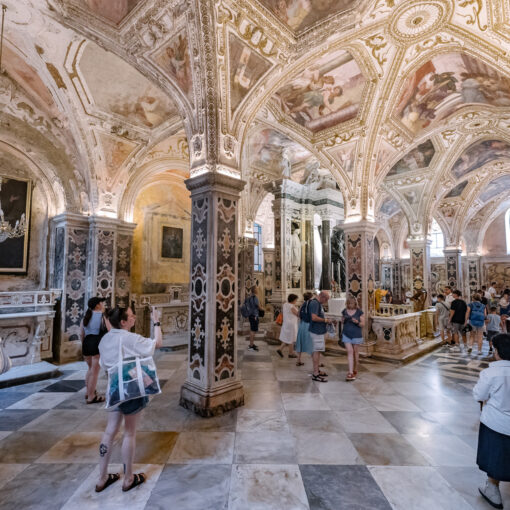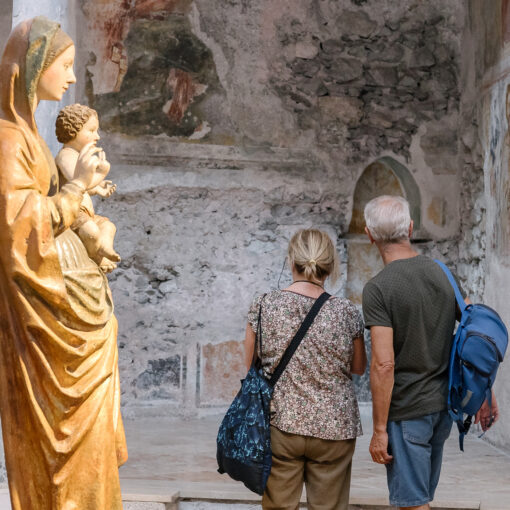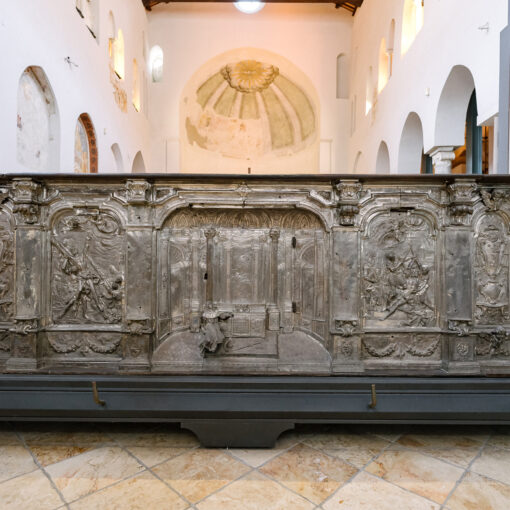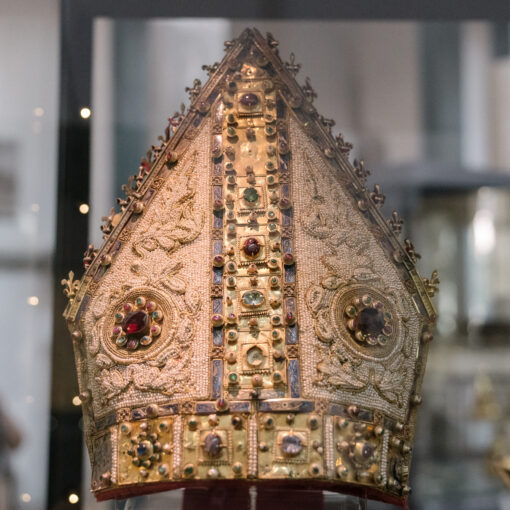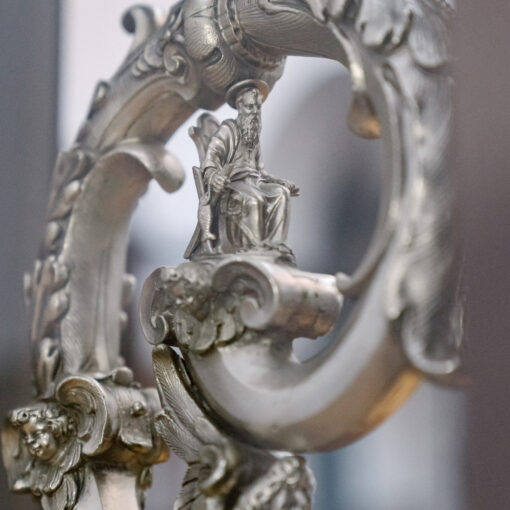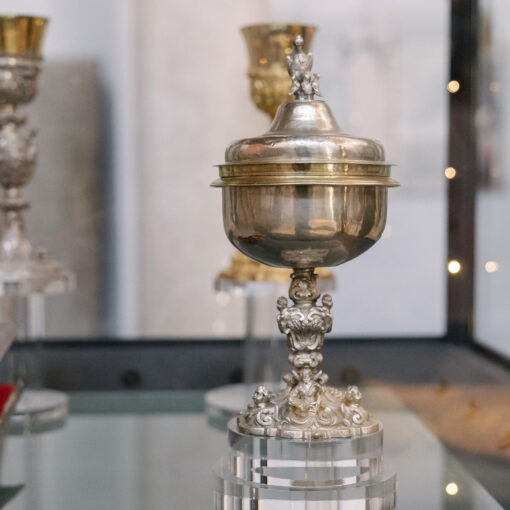Complesso Monumentale della Cattedrale
The Monumental Complex of Amalfi Cathedral includes the Cloister of Paradise, the Crypt of St. Andrew and the Diocesan Museum, which is housed inside the ancient Basilica of the Crucifix.
The Cloister of Paradise
The Cloister of Paradise was formerly used to house the bodies of Amalfi nobles. With oriental charm, harmonized by intertwined arches and small columns, it was built between 1266 and 1268 with the aim of restoring the feeling of connection between heaven and earth. Walking along the galleries, one can admire the heart of the lush green cloister of the small Mediterranean garden. Walking through the cloister triumph the marble decorations, mosaics, funerary chapels, sarcophagi and frescoes.
In the center of the north side of the Cloister of Paradise is one of the most striking views of Amalfi Cathedral’s bell tower.
Cathedral Crypt
The Crypt of the Monumental Complex of Amalfi Cathedral was built in the early 1200s at the behest of Cardinal Pietro Capuano, who on May 8, 1208, introduced the remains of Amalfi’s patron saint, St. Andrew, there, transporting them directly from Constantinople on his return from the Fourth Crusade. The altar and bronze statue of St. Andrew, made by Michelangelo Naccherino, a pupil of Buonarroti, were then built around the saint’s tomb, positioned in the center of the crypt. The richly adorned Crypt also boasts two marble sculptures depicting St. Stephen and St. Lawrence, carved by Pietro Bernini. The Crypt is connected to the miracle of St. Andrew’s Manna.
Diocesan Museum
The Basilica of the Crucifix, dating back to the 9th century, is the oldest cathedral in the city. It takes its name from an ancient wooden crucifix that stood on the high altar. Since 1996 it has been home to the Museum of Sacred Art of the Diocese of Amalfi. Here are preserved artifacts of the religious history of the diocese from the Cathedral of St. Andrew the Apostle and the diocesan territory.
On display are objects dating from the 12th and 18th centuries, such as silver reliquaries, collars, crosses, vases and chalices, as well as stone relics, marble bas-reliefs, capitals, fragments of mosaics from the Cathedral’s ancient facade, frescoes, sculptures and wooden statues.

